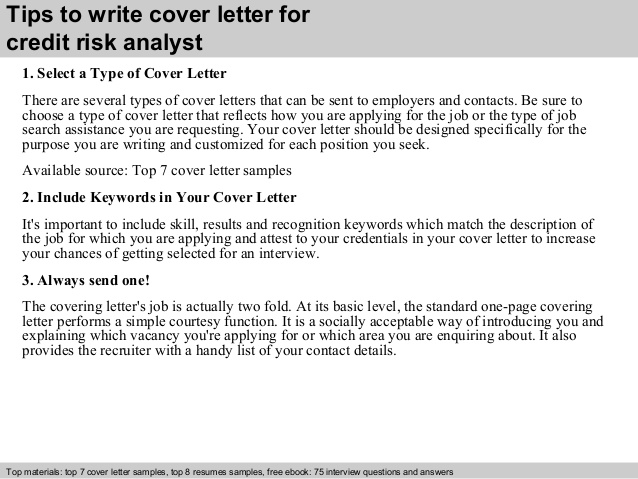Asset Quality Definition
Content

Using a sample of 63 European banks and quarterly data over the period 2005–2018, this paper investigates the relationship between capital and asset quality with bank risk and performance. As regards its relationship with equity betas, the LLP ratio shows a positive and statistically significant relationship for large banks which is coherent with baseline results and further supported by the same relationship between the coverage ratio and equity betas. The explanation still stems from the propensity of large banks to merely abide by provisioning rules. As second additional test, we check for eventual differences in the evolution of the relationships between asset quality and capital with bank risk and performance due to bank size.

We then consider banks’ financial stability measures and choose the Z-score, an accounting-based measure, as first variable. Proposed initially by Roy [83], the Z-score is a spread measure able to provide information regarding the stability of banks [13, 30, 67]. Indeed, it mirrors the level of standard deviations by which ROA has to deviate from its average value to suppress the Equity value of the bank [28].
Examiners also check how companies are affected by the fair market value of investments when compared with the bank’s book value of investments. Lastly, asset quality is reflected by the efficiency of an institution’s investment policies and practices. Because asset quality is an important determinant of risk that profoundly impacts liquidity and costs, analysts go to great lengths to make sure they issue the most accurate evaluations possible. Indeed, their pronouncements can greatly affect the overall condition of a business, bank, or portfolio for years to come.
Banking
Then we’ll make your life even easier by listing the seven QA metrics your organization should consider adopting before sharing our final thoughts and calling it a day. So, it’s obvious that understanding QA metrics and knowing which ones to adopt is essential. Composite and component CAMELS ratings are assigned from 1 to 5, with 1 indicating the strongest performance and 5 indicating the weakest. All content on this website, including dictionary, thesaurus, literature, geography, and other reference data is for informational purposes only. This information should not be considered complete, up to date, and is not intended to be used in place of a visit, consultation, or advice of a legal, medical, or any other professional. We provide the banking community with timely information and useful guidance.
We make this division based on the safety and soundness ratings of banks made by bank supervisors. Banks receive a 1 through 5 rating under this system, with 1 reserved for the banks in the best condition and 5 for banks in the worst. Supervisors consider a bank receiving a 1 or 2 rating to be in satisfactory condition, while banks with a 3, 4 or 5 are in less than satisfactory condition. (By definition, this excludes banks that previously failed or merged, but we think this will not materially bias our results, as only a small number of banks fall into this group.) We then review these two groups’ Texas ratios over time.
Quarterly growth warns deep slowdown knocking on the door
Conversely, banks with higher capital buffers adjust their capital levels slower and increase both capital and risk. As an implication, well-capitalized banks are flexible enough to expand risks for future growth whenever valuable opportunities materialize. Some works support indeed a positive asset quality relationship between bank capital and bank risk-taking [43, 62, 71, 84, 88], whereas others support the opposite [20, 31, 68]. In particular, a higher capital base incentivizes a better risk monitoring and screening by banks managers as it reduces bank liability and bailout expectations [37].

(iv) Introduced an international framework for mitigating excessive liquidity risk and maturity transformation through Liquidity Coverage Ratio (LCR) and Net Stable Funding Ratio (NSFR). As a matter of prudence, the definition of NPL includes loans that have are more than 90 days past due, foreclosed assets, restructured loans and loans that are not technically nonperforming but showing signs of weakness (e.g. special mention loans). But not all NPLs are equal – the definition of NPL may vary according to the jurisdiction that the bank operates in. The loan classification policies are more conservative in some countries compared with others. Defect distribution consists of measuring the number of detects or bugs according to different criteria. Those criteria include factors like severity, area of the application, or even the testing type.
Components of the CAMELS Rating System
Regarding the former, we picked the ratio between gross loans to short-term funding and deposits. According to Chiaramonte and Casu [29], its relationship with risk variables can be interpreted in different ways. If the market perceives negatively banks with a lower level of deposits and liquidity, this aspect leads to an increase in equity risk.
A possible explanation for the former result is that large banks may be more exposed to fluctuations of deposits and short-term funding than small banks which are instead more focused on traditional business. Accordingly, the latter result is explained by the expertise of small and simpler banks in managing short-term funding which may be perceived as positive by the market in terms of reduced equity volatility. With respect to stability measures, size does not appear to moderate the relationship between our funding measure and the distance to default as it is negative and statistically significant, coherently with baseline results, for both large and small banks. The liquidity measure, instead, shows a negative and statistically significant relationship with the distance to default only for large banks. This result is consistent with the negative and statistically significant relationship highlighted for large banks between our liquidity measure and equity volatility as short-term funding and deposits fluctuations may have a deeper impact on equity risk as well as insolvency risk.
What Is the CAMELS Rating System?
Conversely, if the market favours banks with a higher level of loans for a given level of deposit, we expect a positive sign with bank performance variables and a negative sign between the ratio and the bank risk variables. As regards the measure of financial structure, we consider the ratio between short-term debt and total liabilities. Banks that are dependent on short-term debt are more vulnerable to liquidity shocks and subtend a higher level of risk. Thus, we expect a positive relationship with our risk variables and a negative one with performance measures.
The aim was to enhance the transparency of bank exposures by reviewing the quality of banks’ assets, including the adequacy of asset and collateral valuation and related provisions. What does the Texas ratio tell us about conditions of Ninth District banks (see Graph 1)? First, the vast majority of banks in the district had very low ratios during the 2000s.
With respect to performance measures, our liquidity measure shows a negative and statistically significant relationship with ROA only for small banks. Low levels of liquidity and deposits for banks focused on traditional business may have a stronger impact on performance. In this case, the strong reliance on short-term debt may cause small banks a severe backlash to profitability. Finally, as regards the PBR, size does not moderate the negative and statistically significant relationship with the funding measure which emerges for both large and small banks and is in line with baseline results. The liquidity measure, instead, shows a negative and statistically significant relationship with the PBR only for large banks in line with the above-mentioned discussed positive relationship with equity volatility and negative relationship with the distance to default.
However, many companies don’t actively track their progress (or lack thereof) when it comes to quality improvements, which threatens to make the whole effort futile. If we accept that we can’t improve what we don’t measure, then QA metrics become crucial to improving quality in our organizations. A rating of 1 is considered the best, and a rating of 5 is considered the worst.
It makes sense to add it as the second item in our list since it’s sort of a sequel to MTTD. Now we’re going to go the extra mile by actually listing seven examples of QA metrics you might consider adopting at your organization. We’ve addressed that by covering some of the main characteristics you should look for when trying to pick the right metrics for your organization. The first property of a great QA metric is “zero subjectivity.” In other words, it should be not only objectively measurable but also actionable. Making the colossal investment into a QA effort without having the means to verify whether it’s working or not isn’t business-savvy.
- You could have 100% line coverage and still have scenarios that aren’t tested, because of conditional branching (e.g. if statements) inside your code.
- RBI made special inspections during August-November 2015 and prepared the AQR.
- In addition, the quantile regression analysis does not report marked differences between as regards the effect of the Texas ratio on both stability measures between the lowest and highest percentiles of their distribution.
- We expect positive variations of the gross domestic product to reduce the overall risk of banks’ loans portfolio, hence lowering banks’ default risk [59].
- In fact, you could argue that having a QA strategy in place and not knowing its ROI is worse than not having one at all, and I’d be hard-pressed to disagree.
All assets (required amount of stable funding) and liabilities (available amount of stable funding) are weighted according to their likelihood of being on the balance sheet over the next 12 months. Japan’s prolonged low interest rate environment helps to support debt servicing capacity of its borrower, leading to a healthy system gross nonperforming loans (NPLs) of 0.9% in 2019. It simply refers to the number of lines covered by tests divided by the total number of lines. You could have 100% line coverage and still have scenarios that aren’t tested, because of conditional branching (e.g. if statements) inside your code.
The news that the bank had approached the government for support triggered a loss in public confidence and concerns that depositors’ savings were at risk. The bank was the nationalized in February 2008 after failing to find an acquirer. But the rising level of NPAs has tempted the RBI to come out with additional inspections on the balance sheets of the banks to check the genuine nature of bank assets.
Similarly, the LLP ratio enters significantly and negatively for banks in the lowest percentile considered of the distribution and its effect decreases for higher percentiles. The coverage ratio, instead, enters significantly and positively for banks positioned in the highest percentile of the distance-to-default distribution. This result suggests a poor role for the coverage ratio as failure predictor. The liquidity measure enters significantly and negatively for banks with lower values of the distance to default and its effect maintains across all the percentiles of the distribution but slightly increasing. The same effect and magnitude trend is presented by the funding measure in line with baseline results. As regards control variables, Model 4 highlights the positive and statistically significant relationship between size and the Z-score which is again explained by the premises of TBTF theory as the larger the bank, the higher the probability to be rescued by the government in case of crisis.



